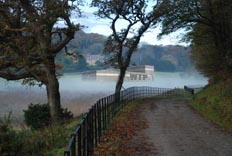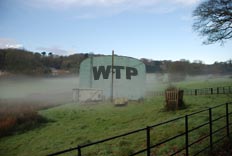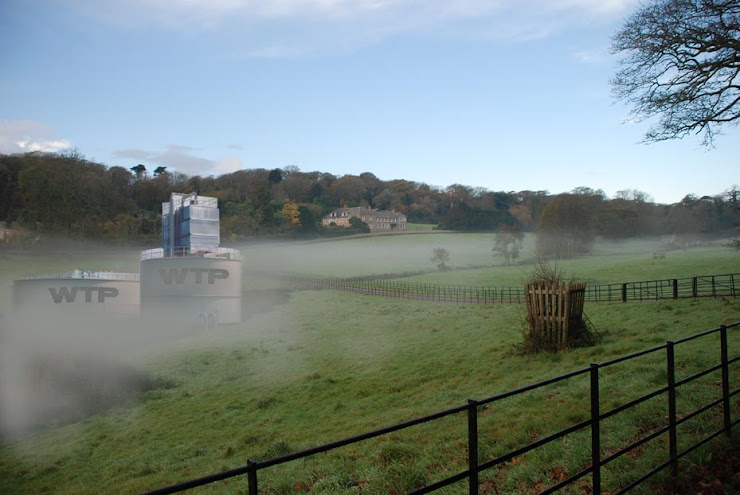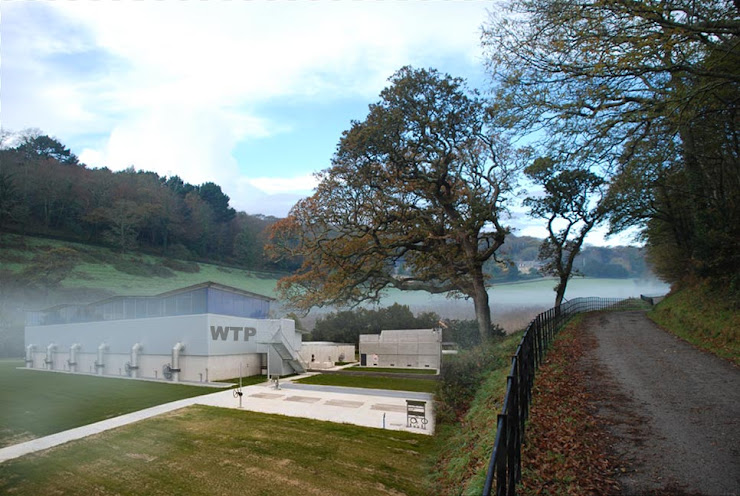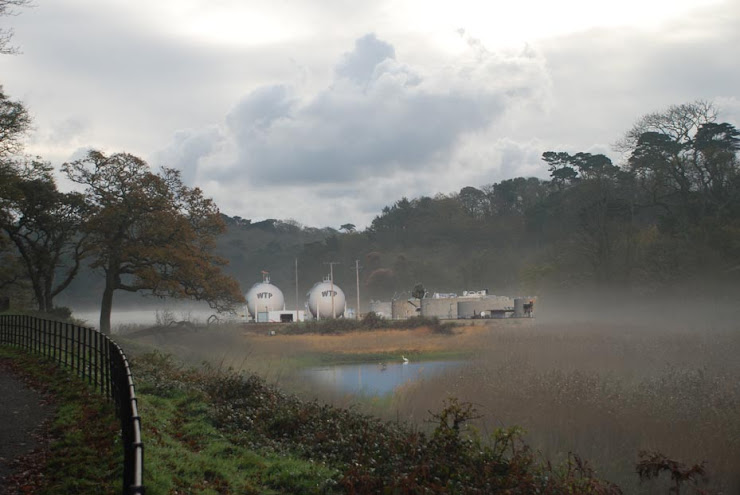During spring, winter and autmn the nitrate and phosphate pollution experienced at Loe Pool on the Penrose estate Helston, Cornwall is invisible. Only in summer when the blue/green algy blooms and forms in large rafts seriously degrading the water quality (blocking out sunlight and thus inhibiting the growth of aquatic plantlife and preventing it from thriving) are we reminded again that this problem, caused by agricultural and domestic pollution, is still here and remains to be a serious problem leaving a devasting effect on its ecology. Although much has been done to try to rectify the problem it is often not until the potential threat of a 'blot on the landscape' becoming real can the extent of a problem be made a tangible experience to vistors all year round. 'Water Treatment Plant' is an attempt to further explore by visual means the problem of the invisible pollution in the pool and present a number of scenarios that, while being perhaps contentious, allow us to consider other possible conclusions that might be necessary to turn the problem around. 'Water Treatment Plant’ is intended to be a functional facility that is to be built in the heart land of the Penrose estate near Helston, Cornwall. Its particular position would have been on the banks of Loe pool in full view of the main house. The utilitarian industrial design, deliberately intended to be obtrusive for its setting, uses temporary scaffolding, plywood exterior walls, doors and a corrugated roof. Installed inside the structure a working model of a working water treatment plant and uses the same principals utilised by Hans Haacke in his work 'Rhine water Purification Plant', installed at Museum Haus Lange, Krefeld, Germany in 1972. The physical presentation of 'Water Treatment Plant’ was to cause an abrupt intrusion in the sublime landscape at Penrose. Is this kind of interaction necessary? And if not, what other options are there?
'Rhinewater Purification Plant', by Hans Haacke, installed at Museum Haus Lange, Krefeld, Germany in 1972.
'By displaying Krefeld Sewage Plant’s murky discharge, officially treated enough to return to the Rhine River, Haacke brought attention to the plant’s role in degrading the river. By pumping the water through an additional filtration system and using the surplus water to water the museum’s garden, he introduced gray-water reclamation. By displaying samples of water released from the Krefeld sewage plant in large glass bottles in the local museum, Haacke's Rhinewater Purification Plant (1972) increased public awareness of the Rhine River's deterioration. For this work, contaminated water was "pumped into a container where it was filtered and purified before entering a large rectangular basin housing goldfish... The presence of a large fish bowl and the picture-window view into the wooded landscape served as a point of contrast between a life-supporting ecosystem and one on the verge of collapse." Any surplus water was discharged into the garden behind the museum.
From http://www.greenmuseum.org/c/ecovention/sect2.html
'By displaying Krefeld Sewage Plant’s murky discharge, officially treated enough to return to the Rhine River, Haacke brought attention to the plant’s role in degrading the river. By pumping the water through an additional filtration system and using the surplus water to water the museum’s garden, he introduced gray-water reclamation. By displaying samples of water released from the Krefeld sewage plant in large glass bottles in the local museum, Haacke's Rhinewater Purification Plant (1972) increased public awareness of the Rhine River's deterioration. For this work, contaminated water was "pumped into a container where it was filtered and purified before entering a large rectangular basin housing goldfish... The presence of a large fish bowl and the picture-window view into the wooded landscape served as a point of contrast between a life-supporting ecosystem and one on the verge of collapse." Any surplus water was discharged into the garden behind the museum.
From http://www.greenmuseum.org/c/ecovention/sect2.html
Subscribe to:
Posts (Atom)
